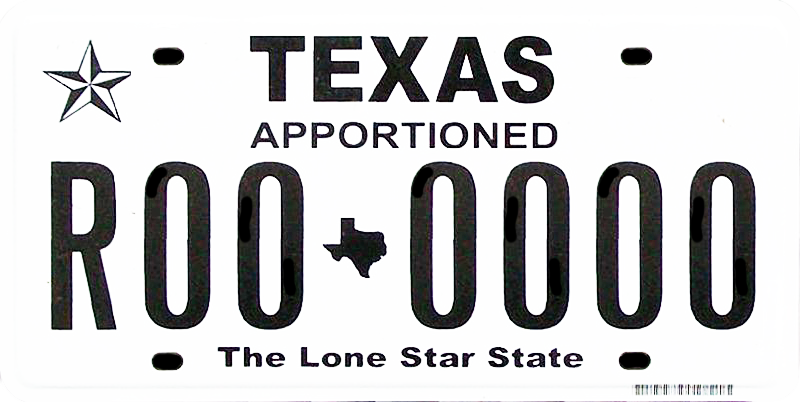

Truck drivers are essential to the American way of life, as even the simplest of goods may travel for thousands of miles before they reach our stores, mailboxes, and doorsteps. Truckers are tasked with transporting these goods from one place to another, and often, that requires crossing state lines… which presents an issue. A large truck can do a great deal of damage to the infrastructure it operates on, which is why drivers of heavy vehicles have to pay additional fees. But, if you’re constantly driving in different states, who should your money go to? Luckily, there is a simple solution to this problem. By registering your vehicle as an apportioned truck, you can rest assured that you’re paying the appropriate amount to each state you operate in.
Most truck drivers’ work takes them across state lines at some point in their career, and if that’s the situation you are in, you have a few options. The most popular, and arguably the easiest for those who change states frequently, is to register with the IRP. The International Registration Plan (IRP) is a registration reciprocity agreement between the U.S. states and the provinces of Canada designed to promote interstate commerce. When you register with the IRP, your heavy vehicle is considered an “apportioned truck,” allowing it to legally travel and conduct business across state and provincial borders. While you only have to register in one state or province, once you do, you’ll be allowed to drive in any member jurisdiction, and after registering, you only need to pay fees to the jurisdictions in which your fleet actually operated. (Think of it like having a license plate for each state where you are registered with the IRP.)
Before the Full Reciprocity Plan (FRP) came into effect, truck drivers would have to rely on estimated distances when reporting to the IRP, which is defined by Law Insider as “either (i) the anticipated distance a Fleet is expected to travel in a Member Jurisdiction during an applicable Registration Year as reported by an Applicant or (ii) the distance assigned to the Fleet by the Base Jurisdiction as determined in Section 320.” This presented many issues; jurisdictions lost revenue due to significant underestimating, there was almost no uniformity between jurisdictions in how they treated estimated distances during an audit, it made administration unnecessarily complicated, and the list goes on.
So, as of January 1st, 2015, all vehicles registering with the IRP now fall under the Full Reciprocity Plan (FRP). After roughly twenty years of deliberation, this plan came into effect intending to make interstate travel more effective, equitable, and efficient. To start, the new plan eliminates the need to estimate distances, opting instead to use actual and average distances. If an apportioned truck travels any amount during the reporting period, they now have to pay fees based on the actual distance they traveled. If the vehicle did not drive any distance or if it qualifies as new under Section 420 of the Plan, the fees will instead be calculated using the average per vehicle distance (APVD) chart from the base jurisdiction (the jurisdiction you are registered in).
APVD is determined by the average distance trucks from your base jurisdiction traveled to all other member jurisdictions in the previous registration year. Now, you might be wondering why the APVD chart is different in each jurisdiction. The answer is rather straightforward: an apportioned truck based in one jurisdiction will likely travel through certain states more than a truck that’s based out of another jurisdiction. For instance, a trucker in Colorado will likely drive through Wyoming more frequently than a trucker based out of Maine due to proximity.
Annually, on March 31, every base jurisdiction will update its APVD for each member jurisdiction. To calculate the fees, they first determine the total reported actual distances that were driven in each Member Jurisdiction by fleets for which they served as the base Jurisdiction during the previous registration year (i). Then, they determine the number of apportioned vehicles for which they served as the base jurisdiction that accrued distance in the previous registration year (ii). And finally, they divide the miles driven (i) by the number of vehicles for each jurisdiction (ii) to come up with the APVD.
If your vehicle is registered at a weight at or above 26,000 pounds or has three or more axles (this only includes axles on the truck itself), in order to cross state lines, you can either register your vehicle as an apportioned truck or get a trip permit for the particular state you wish to travel through. Once you’re registered, you’ll receive apportioned plates and a cab card listing all of the jurisdictions your vehicle can legally operate in.
If you aren’t registered with the IRP, there is still a way to cross state lines, but you’ll need a trip permit – short-term permission to travel in a state outside of your base jurisdiction. If you only leave the state on occasion, this could be the better choice, but if you regularly conduct interstate travel, registering with the IRP is likely the way to go. The cost of trip permits can add up, and many states limit the number of permits you can apply for in a year.
Member jurisdictions in the U.S. and the IRS have an agreement specifying that all jurisdictions will verify payment of the Heavy Vehicle Use Tax (HVUT) before they register a vehicle. So, before you can sign up with the IRP, you must first file and pay From 2290. You might be thinking, “great, one more time-consuming hurdle I have to jump over before I can drive,” but with i2290, filing Form 2290 and paying the HVUT is easy. Our software will walk you through a short series of questions about your business and your vehicle(s), then automatically calculate your taxes for you. The best part? The entire process takes only a few minutes.
Are you ready to get your truck on the road? Create an account with i2290 today!
Special note: This article is for informational purposes, and is not intended to provide, and should not be relied on for tax, legal, investment, or accounting advice. The best way to ensure you’re meeting legal requirements and paying appropriate taxes is by following IRS regulations and consulting with a professional.
We're confident that your experience with INSTANT 2290 will be the best Form 2290 e-filing you've ever had. If for any reason you are not satisfied, just contact support for a full refund. No questions. No conditions. Create your account to get started!